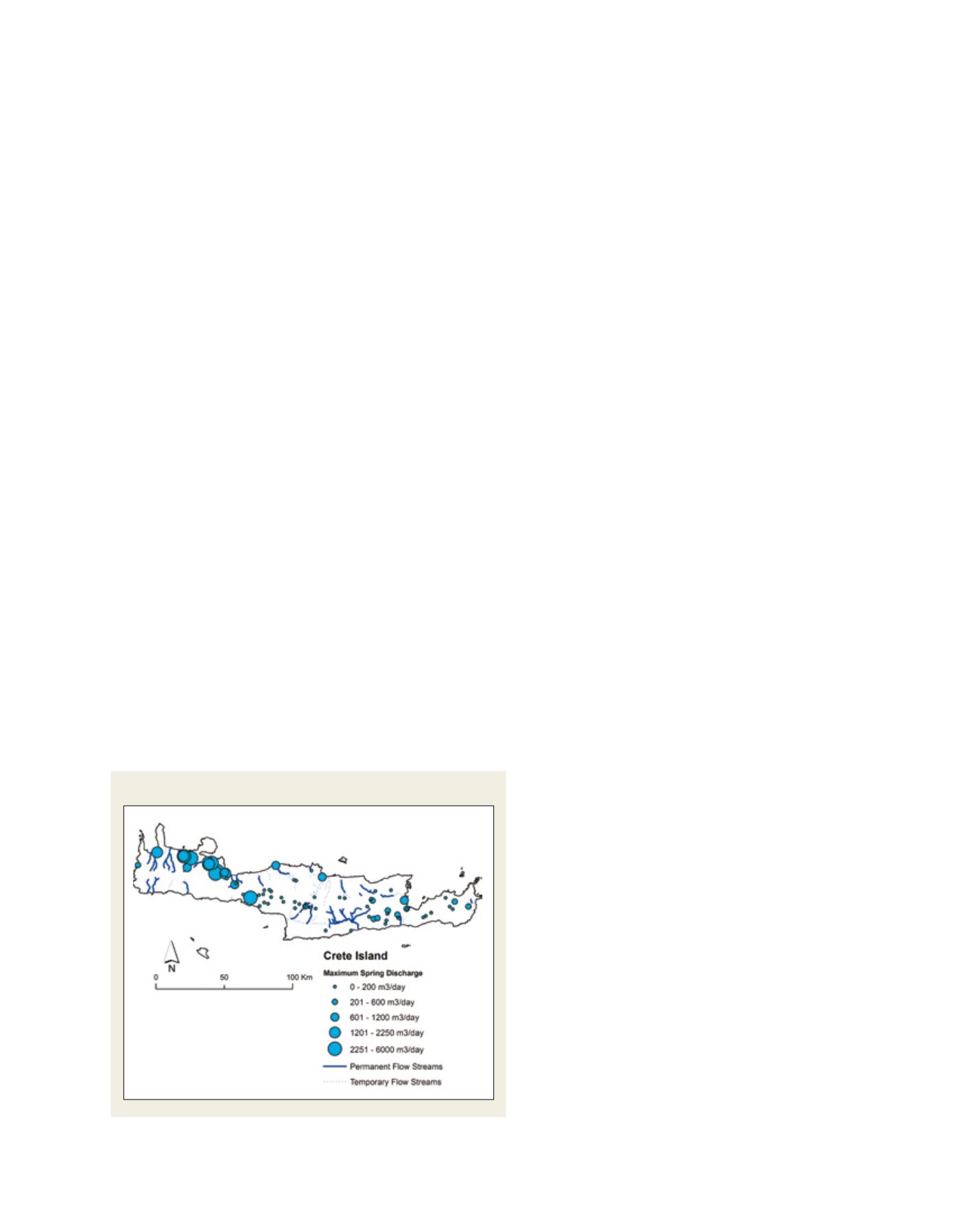

[
] 285
E
conomic
D
evelopment
and
W
ater
65 hm
3
while 6.2 hm
3
is for livestock, 440 hm
3
for agriculture, 0.9
hm
3
for olive mills and 3.2 hm
3
for industrial purposes. Around the
half (46 per cent) of the total water requirement is requested by
the Irakleion prefecture. The available water volume on an annual
basis is estimated to be 372 hm
3
, leaving a water deficit of about
143 hm
3
. Increased water demand for agricultural use on the island,
(approximately 85 per cent of water use) cannot always be met.
10
Great efforts have been made to promote rational use of water by
the agricultural sector, even though irrigated water exceeds 500 mm
annually (a mean rate for agriculture).
Groundwater resources in Crete are overexploited, especially in
the Messara aquifer in South Irakleion where an estimated 51 hm
3
of water is extracted each year, exceeding aquifer yield by 10 hm
3
.
11
Nowadays water needs are covered by a dense network of pipes that
transfer water from springs, reservoirs and groundwater bodies to
villages and coastal cities. For instance in the Rethimno prefecture
the Potami dam, with a reservoir capacity of 23 hm
3
, covers the
irrigation needs of the Amari valley. A substantial amount of water
is reused and becomes available for agricultural and urban needs.
Eight of the 18 domestic wastewater treatment plants in Crete reuse
water to satisfy agricultural water needs. In addition, during recent
years, desalination technology has started to be used for obtaining
small quantities of water for domestic supply, although this is recog-
nized as a very expensive solution.
Issues of water management, spatial planning and agriculture were
historically administered by distinct organizational bodies such as
the Eastern Crete Development Organization and the Western Crete
Development Organization, the municipalities, water associations
and several local land reclamation services without any coopera-
tion between them. The main problem was that the western part
of the island experiences water surplus and the eastern part suffers
from water deficit, but the administrative structures were not organ-
ized in a way that allowed water transfer from the one part of the
island to the other. Many environmental problems have arisen due
to water deficit, such as seawater intrusion into the coastal aquifer,
river dryness, lowering of groundwater levels in many valleys, and
related ecological problems such as the loss of endemic
biodiversity and increased salinity of fresh water. Cretan
wetlands are currently under threat due to overexploita-
tion of water resources. Coastal marshes in particular
are endangered as a result of the expansion of urban
and touristic settlements.
12
In order to minimize the
water shortage problem, effective cooperation is neces-
sary among the different water use sectors, as well as
among the communities which belong to different
basins. Especially in cases where hydraulic works have
to be conducted for transferring water from one region
to another, approaches are needed to convince the local
communities involved.
In the past, environmental issues arising from
water management were not acknowledged as the
main responsibility of any water-related organiza-
tion. However, the adoption of the European Union
Water Framework Directive in national legislation
ushered in the creation of water districts. Crete is
recognized as WD13 and the responsibility for water
management belongs to the Water Department of the
Decentralized Administration of Crete. The prepara-
tion of river basin management plans and suggested
programmes of measures are under public consulta-
tion at the time of writing, especially actions focused
on preventing drought, which Crete faces quite often,
and flood. Public participation is a prerequisite in all
stages of management plan creation, so all interested
parties are actively involved. Even water authori-
ties which were inexperienced in participatory and
cooperative forms of governance have supervised
several stakeholder groups. The main outcome of
this participatory process has been effective linkages
between the various water use sectors. Some forms of
interaction and cooperation were generated between
associations managing irrigation water and public
water supply services. Public awareness resulted
in a deeper understanding of water issues,
13
allow-
ing water allocation from the west to the east part
of Crete. Current policies identify the maintenance
of domestic and municipal water supply as the first
priority, followed by agricultural needs. Perennial
crops are the first priority of the agricultural sector,
ahead of seasonal vegetables.
Towards sustainable management
Crete is moving towards the sustainable management
of existing water resources with the aim of achieving
maximum yields and optimal utilization. Balancing
demand and supply is an important goal in light of the
limited available resources and growing demand in the
urban and touristic sectors. Measures such as managed
aquifer recharge, village connections to wastewater
treatment plants, river ecological flow, erosion elimi-
nation and flood control should be taken to prevent
ecological problems. Cooperation among the different
water use sectors and the communities which belong to
different basins will help to minimize the water short-
age problem.
The main springs in Crete and their maximum recorded discharge
Source: IGME, Water Points Recording – Crete Water District (2009)


















